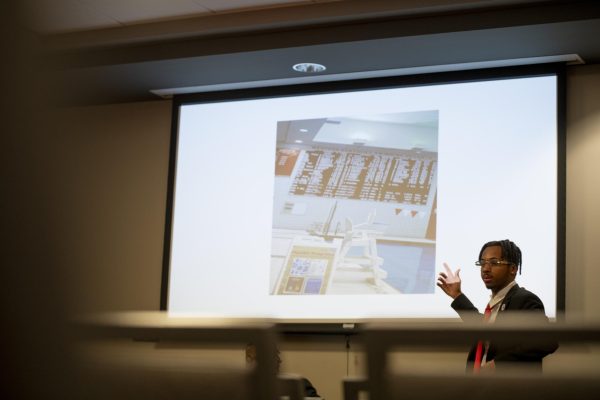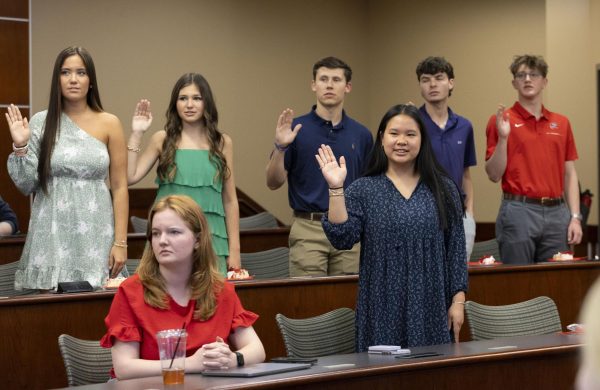Energy use causes penalty
November 11, 2003
New academic buildings are being built. More technology is being added. Dorms are being renovated and updated.
Behind all of that, a factor has come up – by the buck, not the brick.
The university’s utility bills.
Western will have to pay a $250 penalty fee for the next 12 months because it exceeded its maximum energy usage limit in August.
And more steps are being taken to help save energy costs.
The energy usage limit will be increased on July 1, and Western may implement new programs to prevent the overuse from happening again.
Facilities Management Director Doug Ault said students, faculty and staff did their part in conserving energy after a notice was sent asking departments to reduce energy usage or face possible air conditioning cutbacks in August.
The current maximum energy usage limit is 12,000 kilowatts.
Utility Manager Charlie Wolfram said the limit has been at 12,000 since 1993.
But much has happened on campus in 10 years.
Ault said the limit will be increased to 14,000 kilowatts in July, but the university will have to pay for the additional energy.
Bills for Aug. 11 to Sept. 10 stated that Western’s energy usage exceeded the limit by a total of 343 kilowatts for three days in August.
Western paid a $5,200 rate increase for the three days in addition to the impending fines, he said. The overuse happened mostly because Western was not monitoring part of Diddle Arena’s power load.
The 14,000 kilowatt limit should provide a “cushion,” he said.
Ault said he can’t predict what the usage will be next year when the new engineering building is completed and all the equipment is installed.
“We’re taking that much of a jump because of the projection of all these new buildings,” he said.
The renovated dorms have many more outlets than the older buildings, he said. Students tend to use these outlets and leave more things plugged in.
Ault said exceeding the limit couldn’t be helped.
“I think our peak would have been 89 to 100 kW higher if we hadn’t had voluntary cooperation,” he said.
The university should be able to operate for several years on the 14,000-kilowatt limit, Ault said.
Western will have to pay for having more energy available whether it is used or not, and it will also have to pay higher rates.
The Tennessee Valley Authority is expected to send information about how much the limit increase will cost in December, Ault said.
Ault said he hopes the cost of the new usage limit and the penalty fees won’t have a major impact on the budget, but that will depend on temperatures this winter.
Energy usage increases on very hot and cold days because of the additional heating and cooling.
He said the utility budget was increased this year because management predicted higher rates. Ault said the budget was increased by about 6 percent.
The university paid $2.2 million in electricity bills last fiscal year. The electricity budget this year is $2.6 million.
Western wasn’t monitoring the power load from Diddle because it was phasing in a new volt system at a substation and hadn’t yet connected a meter, Wolfram said.
The meter was part of a substation built in 2000 that wasn’t being completely used.
Wolfram said all buildings will eventually be fed power underground from this substation.
Bowling Green Municipal Utilities didn’t have to connect the load to the second meter, he said.
Allan Walker, electrical metering foreman at BGMU, said the load was connected to the second meter to balance the total load at the substation.
Pulses are created to calculate the electrical usage, he said.
He said Western’s monitoring equipment didn’t detect the additional load, but TVA’s did.
“We at BGMU and TVA provide these pulses,” Walker said. “But it’s up to the customer to provide the wiring into the meters.”
Several measures will also be taken on the Hill to conserve energy.
Western received the Governor’s Environmental Excellence Award for Energy Efficiency on Oct. 27 for doing an “energy-saving performance contract” program last year.
In the contract, Western agrees to allow a company to make campus improvements to conserve energy. The money saved from the improvements is used to pay back the company.
Ameresco Enertech, formerly known as LG&E Enertech Inc., made $1.6 million in improvements to eight campus buildings.
The improvements included adding new florescent lights and upgrading heating, cooling and ventilation systems.
John Osborne, associate vice president for campus services and facilities, said Western will do the project again soon.
The improvements were things that needed to be addressed in Western’s $66 million deferred maintenance project, he said.
The improvements will save the university $252,000 on the electric bill each year.
“The savings are being realized, and we’re looking forward to planning the next project,” Osborne said.
He said the next project will allow Western not only to conserve more energy, but also take $10 million off the deferred maintenance project.
Osborne said the next project should begin before June 30.
Western is also considering entering into a voluntary load-sharing program with TVA, Ault said. He said this program will allow Western to receive a rebate by reducing energy usage on days when TVA says its distributors are using too much energy.
Energy usage could be reduced in the summer when there aren’t as many students on campus by turning off unneeded lighting and fans, he said.
He said more information about the program will be received in December.
But Ault doesn’t want to compromise comfort.
“We don’t want to get into a situation where we’re going to impact the needs of the campus in a negative way,” he said.
Reach Shawntaye Hopkins at [email protected].

























